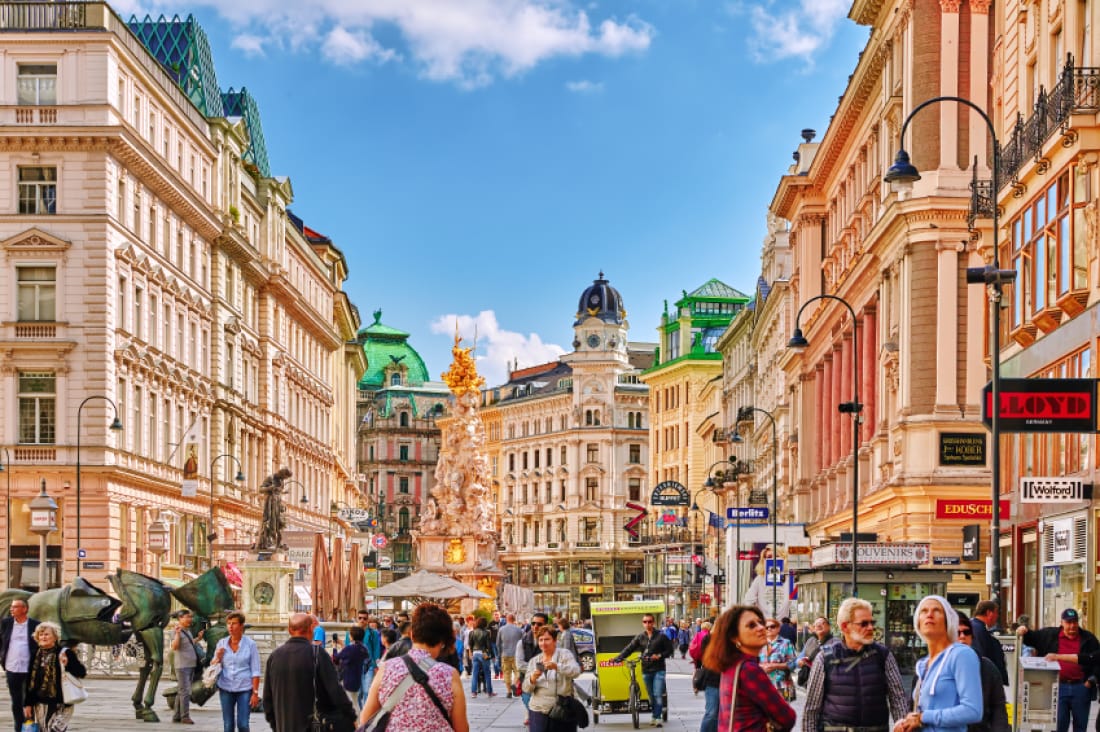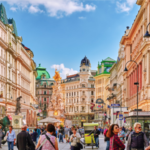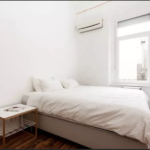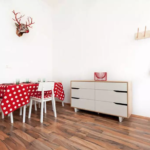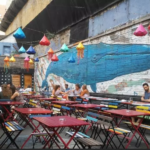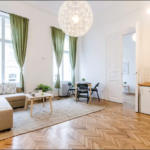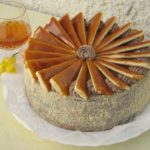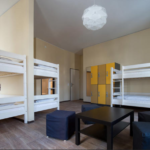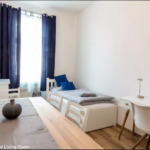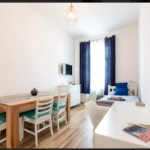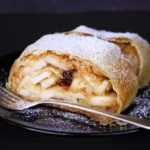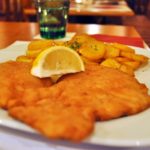By Isabel O’Brien, Morgane Briere and Amandine Hess.
Budapest – Vienna: October 29, 2017 – November 5th, 2017
Have midterms worn you out? Are you looking to get out of Reims for the fall break? From October 28th to November 5th, why not split your time between the city of Music and the Heart of Europe? There is no better place to witness the changing of the seasons than these two cities in Central Europe — Vienna and Budapest.
Travel Costs:
After the class lets out, grab your bags and hurry to Charles de Gaulle! Due to the high price of railway tickets during that weekend, the most economical way to get there on Saturday, October 28 is to BlaBlaCar to Paris and then take the metro to the Terminal. In total, this should set you back about 21.30€. Catch Austrian Air flight 418 to Vienna at 20:15 and be in the city in two hours! Total airfare is 171€. To get from Vienna International Airport to the city center, just take the high speed train — a round trip ticket is 21€. After three days in Vienna, we’re off to our next new and exciting destination: Budapest! A roundtrip ticket (October 31 through November 2) with OBB railjet is 53€ and will get you from city to city in less than three hours. Finally, when our trip is all over with, take Lufthansa flights 1233 and 1040 back to Paris on November 5. The cheapest way to get back to the City of Kings is BlaBlaCar — it will cost you about 13€! In total, your travel expenses for this trip (of course, not counting that late night taxi fare) should be about 279.30€.
BUDAPEST
Accommodation:
First Airbnb option, for 2 people : Apartment in Ruin Pub District.
Price: 31 euros per night. Total fee of 140 euros for 4 nights.
Second Airbnb option, for four: Apartment near Nyugati tér (Western Railway station)
67 euros per night: total fee of 310 euros. This is the priciest option but with a group of four the total price per person for 4 nights would end up at 77 euros!
Staying in an Airbnb will provide you with the freedom and the insight to really get to know these two beautiful Eastern European cities ! Choosing between these three stunning apartments just may give you a headache.
Hostel option, for 2 – 4 people: Wombats City Hostel Budapest
Price: 66 euros per person for 4 nights
Things to do and see:
Whether it’s visiting Hungary’s Parliament Building, catching an opera at the State House or walking along Danube Promenade you will be surrounded by architectural splendour. Just do not forget your bathing suit as the city boasts some of the best public baths !
Here are a few of the top sights we have found for you !
- Parliament Building- EU citizens bring your passport for a free tour of the parliament building!
- Gellért Baths
- Heroes’ Square
- Margaret Island
- Danube Promenade
- St. Stephen’s Basilica
- Hungarian State Opera House
- Fisherman’s Bastion
- The Buda Hills
- Dohány Street Synagogue- This synagogue is currently one of the largest in the world outside of Israel.
- Andrássy Avenue- declared a World Heritage Site in 2002.
- Liberty Statue- The Liberty Statue on Gellert Hill is one of the few prominent Communist statues which remained.
- You can take a chairlift through the Buda Hills for some epic views of the city, or an antique funicular (cable railway) up the steep slope to Buda Castle.
Things to know before you hop on the plane:
- Buda and Pest were once separate cities
Buda and Pest were two distinct cities separated by the river Danube beforing merging in 1873. Buda, traditional home of royalty, castles and fortresses, sits on the hills of the west; while Pest in the east, is a hub for commerce is now filled with hotels and ruin bars.
- Ditch your Euros and Grab some Forints 1 EUR = 310,794 HUF
- Public transport in Budapest is cheap, with tickets costing about 1 euro and with the second-oldest underground railway in the world it is even more impressive. The M1 line is the second-oldest underground railway in the world It has been in constant operation since 1894, and is even listed as a UNESCO World Heritage Site.
Hungry in Hungary?
Do not worry, Budapest has many options to eat well and for a reasonable price.
If you are craving traditional pastries try the following:
– “Dobos Torta” : probably one of the Best Hungarian cakes. This chocolate pastry caramelized on the top was invented by the famous baker Josef Dobos.
– kürtöskalac : a tourist favourite.
Searching for an affordable, nourishing, typical meal :
– Drum Café : beside the must-try Goulash, traditional menu for 7.50 euros
– Regos Restaurant : traditional dishes served in a cosy cave
Fast-Food :
– Bors Gasztro Bar
– Töltö : aesthetic hot-dogs
Nightlife:
The mythical ruin bars : opened in abandoned buildings, they offer artistic underground vibes. The Szimpla Kert, the first one created in 2002 has been ranked the third best bar worldwide on Lonely Planet. They each have their own unique style, often decorated with 80’s recuperated items.
Thermal bath parties with lights shows Magic Bath parties in the Lukács are also great during the winter!
And if you have not had the time to explore the Danube during the day, or loved it so much you wanted to go again there is a Night party on a boat on the Danube for 16 euros.
VIENNA
Accommodation:
First hostel option, for 4 people: 4 beds for 3 nights is around 307 euros, (76 euros in total per person)
http://www.french.hostelworld.com/hosteldetails.php/Wombats-City-Hostel-Vienna-at-the-Naschmarkt/Vienne/45674?dateFrom=2017-11-02&dateTo=2017-11-05&number_of_guests=4&sc_pos=1
First Airbnb option, for four people: 3 nights for 286 euros, 71 euros per person.
Must see architectural splendours:
Vienna State Opera
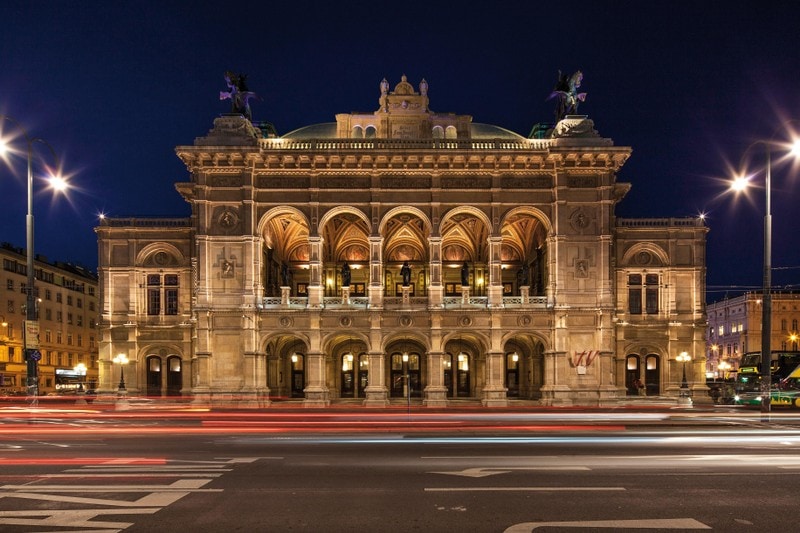
Kunsthistorisches Museum
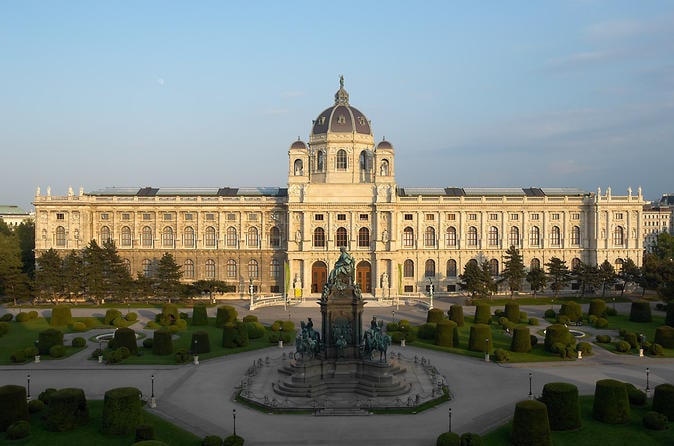
Vienna Parliament
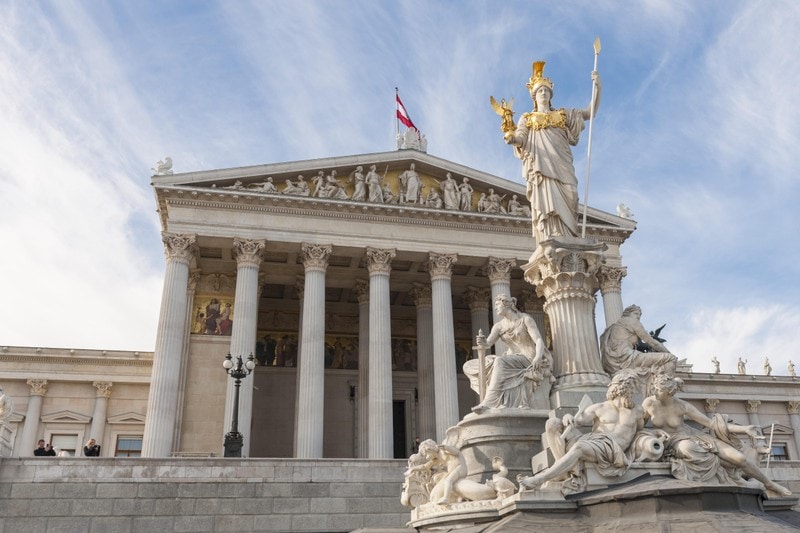
Burgtheater
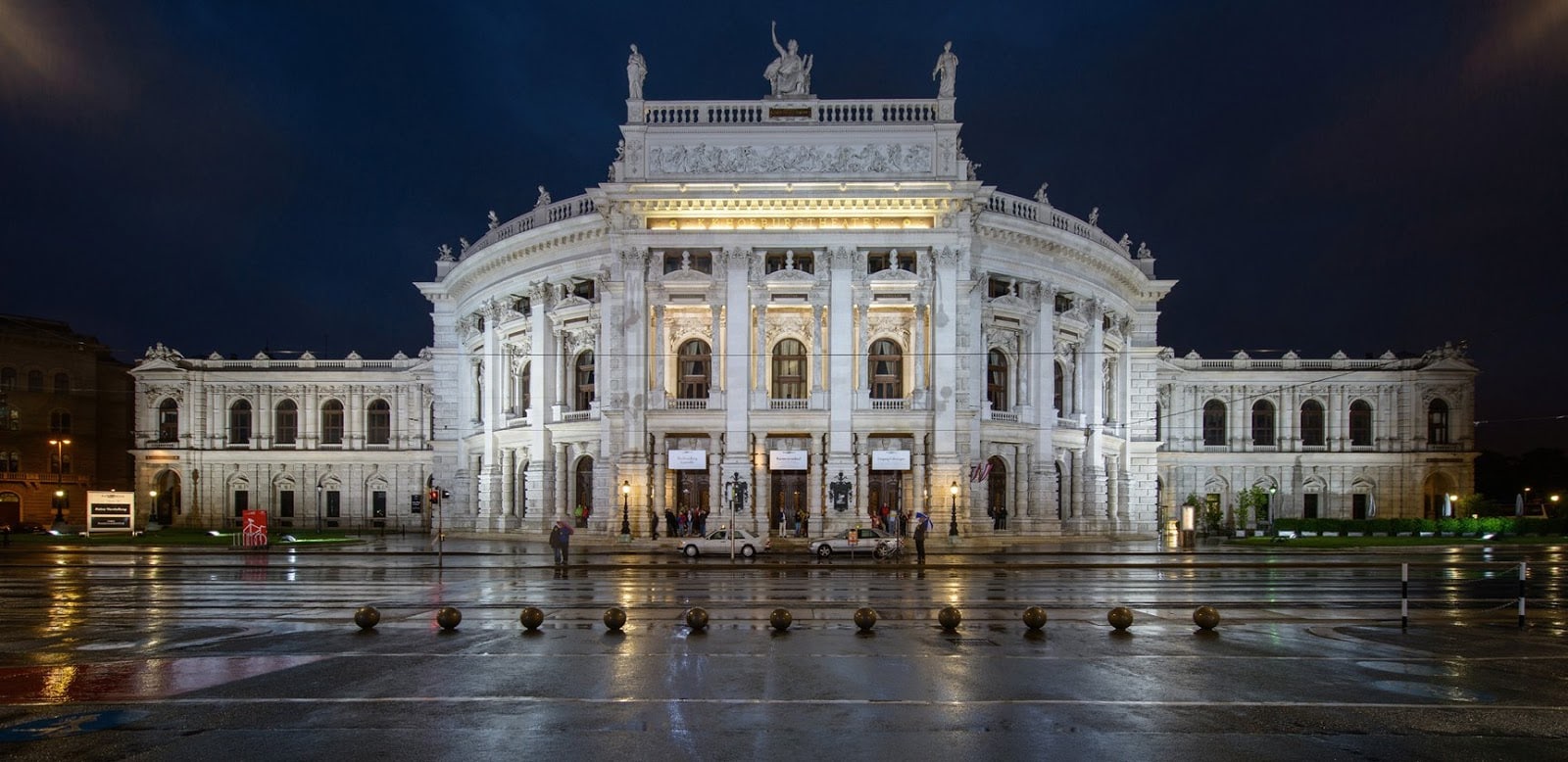
Things to do and see:
Neighborhoods:
- Neubau (7th arrondissement): Known for its art galleries, industrial coffee shops and youthful atmosphere this is the perfect neighbourhood to experience the most artistic side of Vienna.
- Wieden (4th arrondissement): better known for its laid back nightlife, this is a great place to grab drinks if you are looking for something lively.
- Innere Stadt (1st arrondissement) : Vienna’s first district is the heat of the historic city!
- St Stephen’s Cathedral
- Hofburg Palace
- Michaelertor – an ostentatious gateway into the Hofburg complex
- Kunsthistorische Museum
- Spanish Riding School
- Schönbrunn Palace
- Museums Quartier (night)
- See an opera. However, tickets can cost up to 70 euros.
- If your budget is tight Vienna hosts many coffeehouses and although the coffee is not free, many offer free piano concerts during the day, such as Café Landtmann, Café Schwarzenberg, or Café Central)
Good food and even better drinks:
We all know the “croissant” legend, according to which croissant was invented in 1683 to celebrate the end of Vienna’s siege by the Ottoman Empire. And we can be thankful to Vienna for its kipferls that evolved in “viennoiseries” once introduced to France around 1683.
Broke and in a rush:
Würstelstände: on every street corner, more than a sausage stand. One can never go wrong with a classic currywurst.
Vegetarian escape or “Würstoverdose” : Schachtelwirt, complete meals to takeaway in nice little boxes
Searching for Schnitzel and other local dishes :
– Gasthaus Kopp
Craving for Apfelstrudel, Sachertorte and other typical pastries :
–Vollpension : cosy, “comfi”, atypic place, you really feel home
– Any Kaffeehaus
Nightlife:
The Ländler and Schuhplatter are austrian folkloric dances but in the clubs, you will rather dance on austrian electro or other beats. Here’s a non-exhaustive list on where to party in the capital.
Unavoidable clubs in the Gürtel area : Chelsea, B72, Rhiz
Along the Danube : Flex (one of European’s most famous clubs), Grellen Forellen, the Werk
Ringstrasse area : Volksgarten Disco, Säulenhalle
And a little extra info for the curious…
Going to miss Piketty’s lectures during the break? Close your eyes during a rendition of Beethoven’s 9th Symphony at the world-renowned Vienna Opera House and be reminded of none other than yours-truly.
And while Professor Piketty seemed to illustrate to us every time and date of every major battle and conquest that Napoleon plundered, he somehow forgot to mention this fascinating tidbit: Napoleon occupied Vienna in 1805 and again in 1809, affecting Ludwig von Beethoven deeply each time. His first occupation interrupted the premiere of what ended up being Beethoven’s only opera, Fidelio. Even worse, during Napoleon’s May 10, 1809 siege, the child prodigy, already losing his hearing, placed pillows over his ears lest the sound of the shells falling outside cause him even more damage.
History not your thing? Let’s talk science. Interestingly enough, Vienna technically sits in two different climate zones. It’s located right at the border of the moderate middle European transitional climate and the drier Pannonian zone. A third biome could be added — the tundra. Also, Vienna is the home of the snowglobe! Everyone’s favorite souvenir was invented in the City of Music by Erwin Perzy in 1905. His shop, Original Vienna Snowglobes, still stands today, so pick one up for yourself.
Don’t miss out on all the fascinating things these two cities have to offer— book your tickets today before prices go up. Happy travels and let us know how your trip goes either in the comments or by tweeting us at @thesundialpress. Bon voyage!
Other posts that may interest you:
- Local Victories for Turkish Opposition — A Sign of Hope?
- Are France and Japan a Mismatch Made in Heaven?
- A Reflection on Dark Tourism
- Cadavre Exquis : Goodbye stranger
- An Untoward Progress?
Discover more from The Sundial Press
Subscribe to get the latest posts sent to your email.


